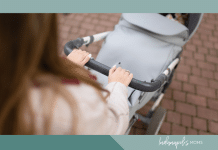My favorite place in my preschool classroom is always the art center. Whether we are painting, drawing, or sculpting, I love to create alongside my students. When we freely create together, we develop a stronger relationship. I am gifted the opportunity to get to know their favorite colors – their likes and dislikes. I hear all about their families from their perspective. I watch as they find colors that make the perfect blend of their skin tone. But most importantly, I see each of their unique identities unfold at the art center.
The key to creating spaces that build relationships and self-awareness lies in my willingness to let the child guide the experience. By providing art experiences that allow my students to explore and experiment freely, they actively learn how to self-express, self-regulate, make choices, and feel successful. The process of creating allows children to unlock their learning, but more importantly, it offers them the space to discover their own strengths, preferences, and self-identity.
Engaging in the process of art goes beyond crafts. There are no step-by-step instructions or right or wrong ways to create. Instead, process art focuses on the child’s experiences as they explore art tools, techniques, and materials. For the child, it is relaxing and calming. For a type-A adult, like myself, it can be the opposite; none-the-less, any mess has been worth the unique and original masterpieces my little learners create.
I share all this with you because I truly believe relationships are built through the creative process. Young children get to know themselves and others while adults learn how to step aside and listen. The beauty of establishing an inviting, process-driven creative space is that it can be done anywhere – even at home.
To start, all one needs is the willingness to get a little messy, to unlock their creativity, and to just step aside and let the process unfold.
Next, it is important to set aside a space for creating. This can be a corner in the kitchen or playroom. Maybe, it is an outdoor spot on a patio. No matter where you choose, it is important for the adults to be okay with art materials and messes being used in this space. In my classroom, I use what we call an Art Cart where children can freely choose their art tools and materials to create at a nearby table. If you want to learn more about creating an Art Cart at home – click here
[Side note: As I said before, I tend to be a type-A adult, and I need to have some control in my creative spaces. Process art doesn’t have to mean paint on your walls and ceiling or letting your child run freely around the house with markers. Typically young children need and thrive with guidelines. Before any art project, I always model how the materials can be used while setting some boundaries for the art experience.]
If an Art Cart is still a little too unstructured for you or you are looking for different opportunities to experience creativity, check out these ideas:
- Raised Salt Painting
- Salt Painting Process Art for Kids
- 39 Ideas for Playing with Playdough
- Art with Nature
- Chalk Nature Painting
- Making Perfume with Kids
- Snow Art
The goal of process art is for the child to make decisions throughout the art process and to explore and experience how the materials work together. To accomplish this goal, we adults need to provide space and time to create. This can be the hardest part of process art, but the more we step aside (or explore our own creativity alongside our children) then the more opportunities our children have to grow and learn.
Lastly, when your child finishes creating, take a minute to make open-ended statements or ask open-ended questions about their art, for example:
- Instead of asking, “What did you make?” Simply say, “Tell me about your artwork!”
- Instead of just saying, “I love it!” Try adding, “How do you feel about your artwork?” or “What do you like about your art?”
- Instead of saying, “That’s cool!” You can ask, “How did you do that?” or “What did you use to make your art?”
These are meaningful, powerful conversations that spark interest in creativity and how things work. They build relationships just by showing an interest in not only their masterpiece but also their thinking process – who they are. When you go beyond crafts, magic happens and children unlock parts of their identity.








